Meloxicam
Uses of Meloxicam
Meloxicam is primarily used for managing pain and inflammation caused by conditions like osteoarthritis, rheumatoid arthritis, and ankylosing spondylitis, making it a vital part of the nonsteroidal anti-inflammatory medicines (NSAIDs) category of medicines.
In addition to managing pain and inflammation associated with arthritis, Meloxicam may also be useful in other conditions where inflammation is a significant component, as directed by a doctor.
Side effects of Meloxicam
Abdominal pain
Diarrhea
Dizziness
Headache
Nausea
How Meloxicam works
Meloxicam is a type of medicine called a nonsteroidal anti-inflammatory medicine (NSAID). It works by inhibiting enzymes known as cyclooxygenases (COX), which are crucial for the production of prostaglandins. Prostaglandins are substances in the body that trigger pain, inflammation and fever.
Certified content
Written By

BDS, MDS
Reviewed By

BMS, FMC, MD Resident
Expert Advice
Dosage Forms Available
Meloxicam can be taken orally (tablets, suspension and capsules) and via infusion (intravenous, intramuscular) routes.
Age and Dose Restrictions
This medicine is intended for use in adults as well as in children aged 2 years and above.
Contraindications
This medicine is contraindicated in patients with a known allergy to Meloxicam or other NSAIDs. It is also contraindicated in patients with active gastrointestinal bleeding or ulcers, severe heart failure, and those who have had asthma, urticaria, or allergic reactions when taking NSAIDs in the past. It should not be used for managing pain after coronary artery bypass graft (CABG) surgery.
Other Medications to Avoid
Meloxicam may interact with other NSAIDs (such as ibuprofen, aspirin), anticoagulants (like warfarin, heparin), corticosteroids (such as prednisone), diuretics (like furosemide), and ACE inhibitors (such as enalapril). These interactions can affect gastrointestinal safety, kidney function, and blood pressure control.
Overdose and Missed Dose
An overdose of Meloxicam may cause symptoms such as lethargy, drowsiness, nausea, vomiting, and epigastric pain. If you observe any of these symptoms, inform your doctor immediately.
If you forget to take a dose of Meloxicam, take it as soon as you remember. However, if it is almost time for your next dose, skip the missed dose and continue with your regular schedule.
Management of Side Effects
Most side effects are temporary and generally harmless and resolve when discontinuing this medicine. However, if you experience any severe side effects or worsening of any of the symptoms, please consult your doctor.
Drinking plenty of water may help to manage some side effects like dry mouth or constipation.
Taking the medicine with food may help reduce gastrointestinal side effects like nausea or stomach upset.
Use in Driving and Operating Machinery
Meloxicam may cause dizziness. If you feel dizzy after taking this medication, avoid driving or operating heavy machinery until these symptoms pass.
Use in Pregnancy and Lactation
Meloxicam should be used with caution in pregnant women, especially during late pregnancy. It is advisable to consult a doctor before using this medicine during pregnancy or while breastfeeding.
Caution in Other Conditions
Patients with cardiovascular disease or risk factors, a history of ulcers or gastrointestinal bleeding, liver or kidney impairment should exercise caution when taking Meloxicam. Elderly patients should also use this medication with caution due to the increased risk of side effects.
Special Dietary and Lifestyle Recommendations
Drink plenty of water to stay hydrated, as Meloxicam can affect kidney function, and proper hydration helps support kidney health.
If you have high blood pressure or are at risk for it, limit your intake of sodium (salt) as NSAIDs like Meloxicam can cause fluid retention and worsen blood pressure.
Avoid activities that may strain your joints or increase the risk of injury, especially if you are experiencing pain or stiffness.
Frequently asked questions
Is Meloxicam a steroid?
No, Meloxicam is not a steroid. It belongs to the category of nonsteroidal anti-inflammatory medicines (NSAIDs).
Does Meloxicam have any effect on sleep?
Meloxicam doesn't usually directly affect sleep. However, relieving pain and inflammation can indirectly improve sleep quality.
Will Meloxicam affect fertility?
It may impair ovulation by inhibiting the enzyme cyclooxygenase (COX), which plays a role in the production of prostaglandins involved in ovulation. This effect is generally reversible upon discontinuation of the medication.
Is it safe to take Meloxicam daily?
Meloxicam may be taken daily if advised by your doctor but long-term use can increase the risk of gastrointestinal ulcers and bleeding, liver and kidney damage, and cardiovascular events.
How much time does Meloxicam take to work?
The time for Meloxicam to start working varies between individuals. Generally, you may begin to feel relief within an hour of taking it.
What is the best time to take Meloxicam?
The best time to take Meloxicam is as advised by your doctor.
Is Meloxicam available over the counter, or do I need a prescription?
Meloxicam usually requires a prescription before purchase and is not available over the counter.








Subscribe
Claim your complimentary health and fitness tips subscription and stay updated on our newest promotions.
Download Truemeds
Manage your health with ease Download Truemeds today!Get easy access to medicine refills, health information, and more. With our app, you'll never have to wait in line again. Download now and start taking control of your health.

Contact Us
Our customer representative team is available 7 days a week from 9 am - 9 pm.
v3.4.16
Our Payment Partners








